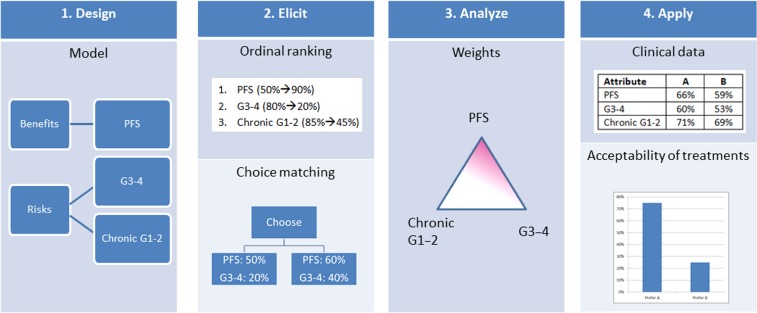Figure 1.
Schematic representation of the steps taken in this study. In step 1 (Design), a model is set up with the help of a focus group, with attributes of interest and ranges on which preferences will be collected. In step 2 (Elicit), a questionnaire is used first to elicit the ordinal ranking of the attributes considering the full range of alternatives; then choice matching is used to elicit trade‐offs by comparing different levels for pairwise attributes, and the process is repeated for all attributes. In step 3 (Analyze), the data collected in the survey are transformed into a set of weights reflecting the relative importance of the considered attributes. In Step 4 (Apply), the elicited preferences are combined with data from a clinical trial to assess acceptability of two treatments based on the individual elicited weights.
Abbreviations: G1–2, mild or moderate toxicity; G3–4, severe or life‐threatening toxicity; PFS, progression‐free survival.

